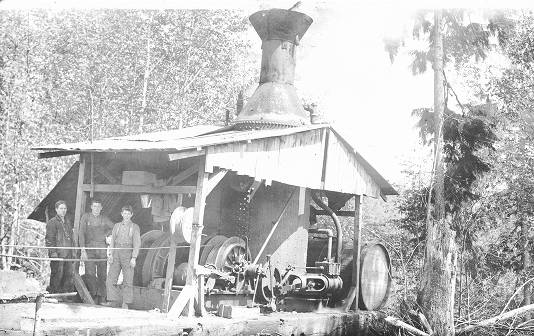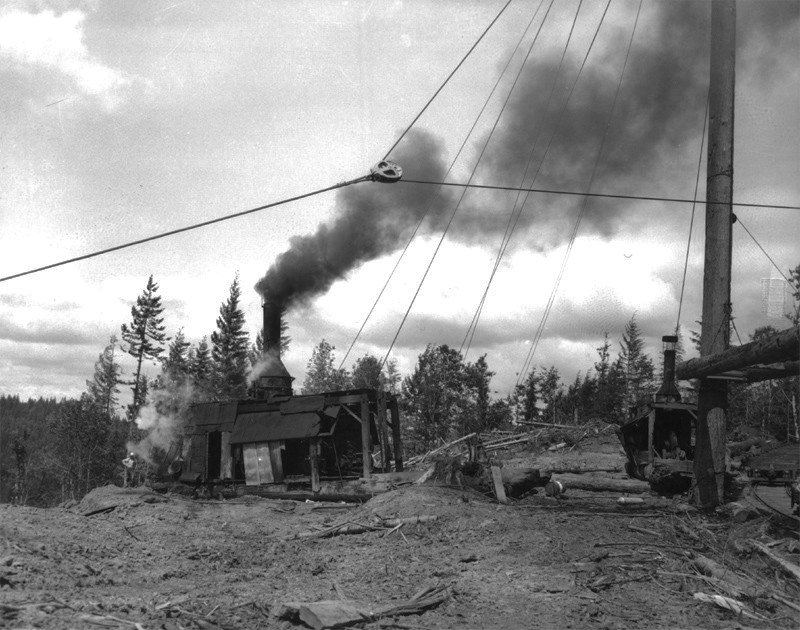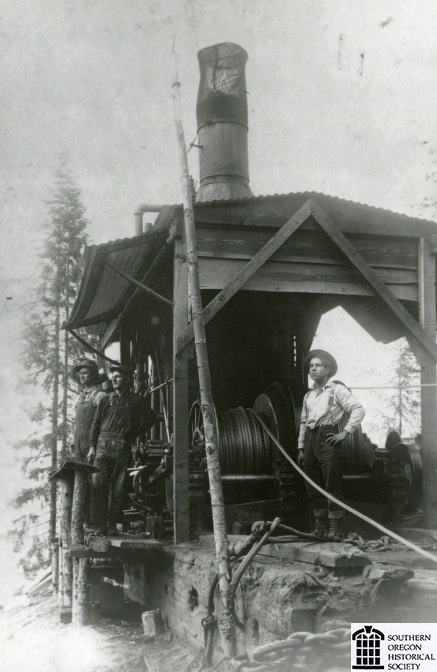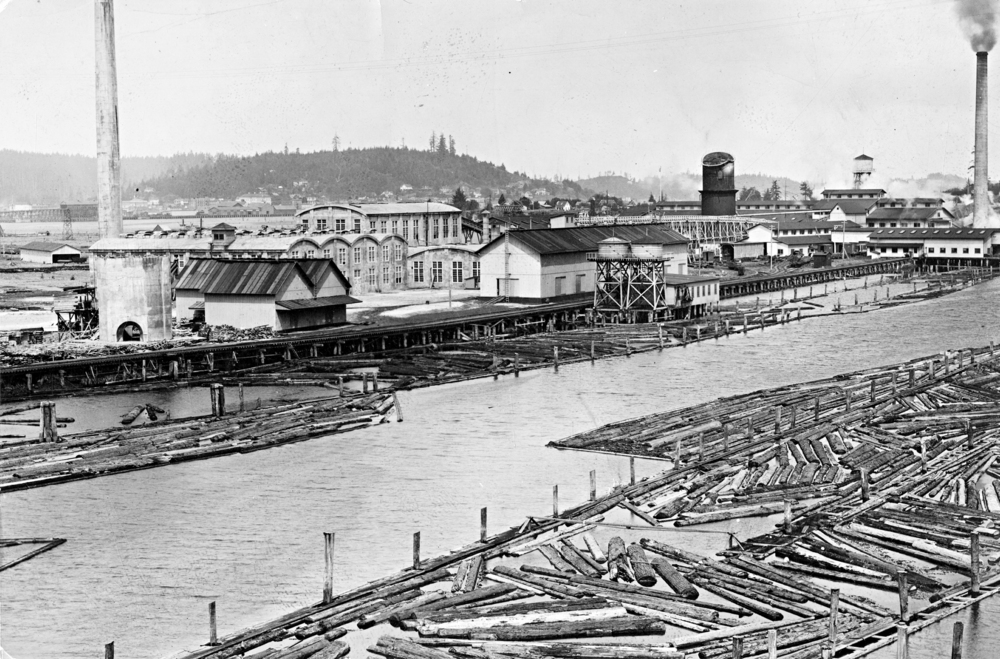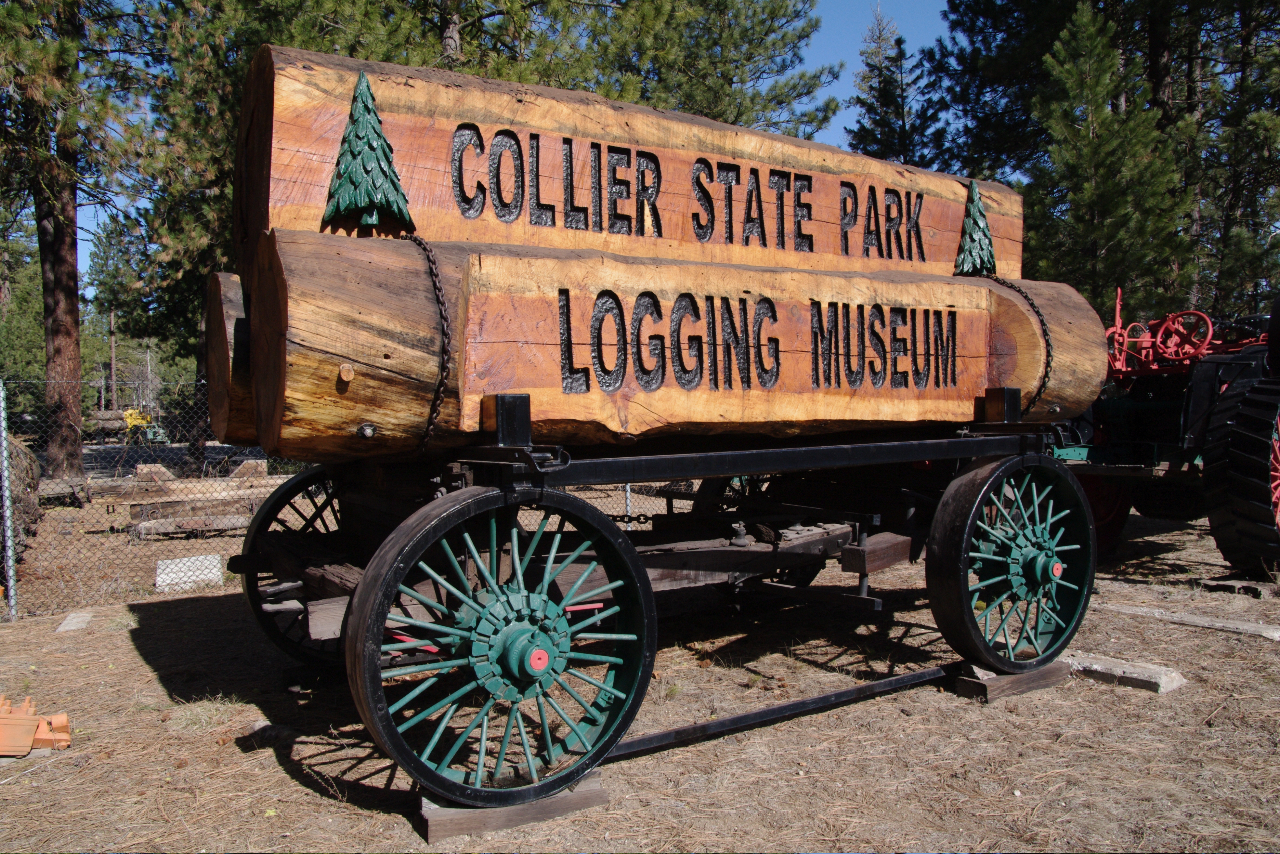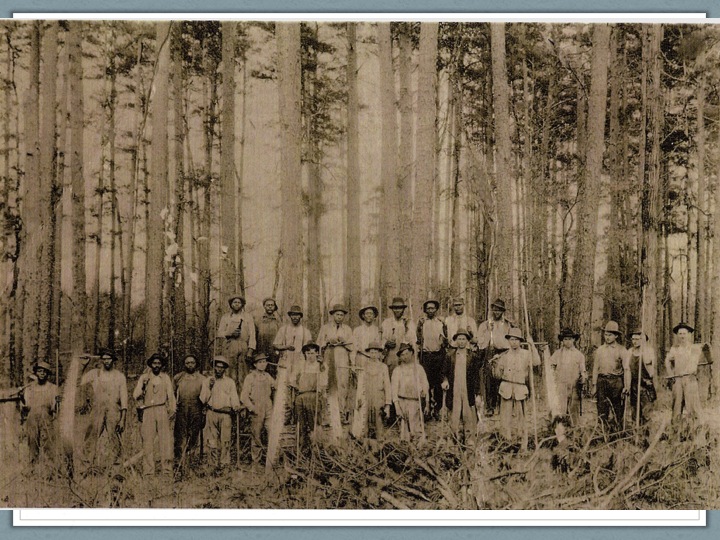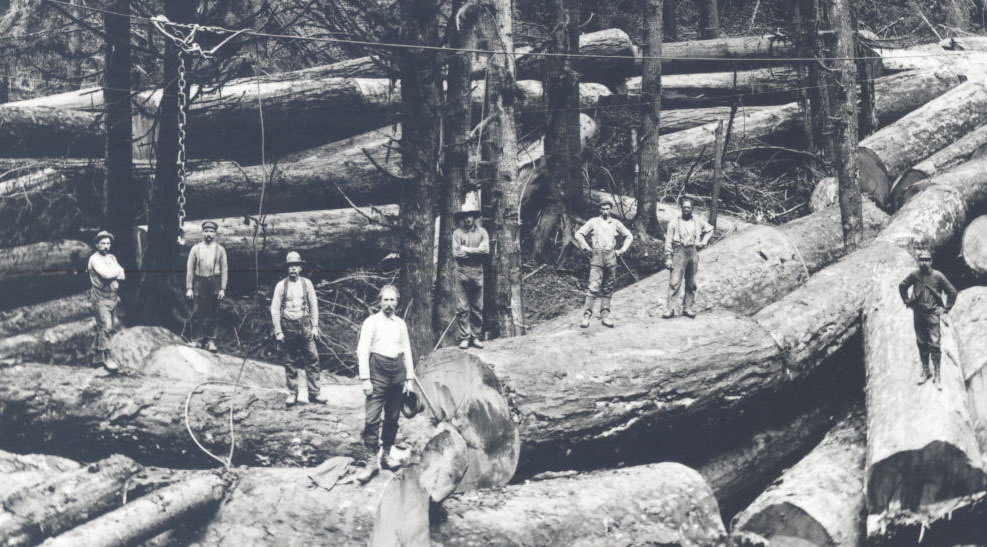A donkey engine was an integrated machine consisting of a powerplant and gearing that turned one or more drums or winches containing wire rope. Designed to lift, drag, and move logs from the stump to an accumulation point, donkey engines were also used to load logs on cars that transported logs to distant mill sites. Though invented in California, the donkey engine helped accelerate timber harvesting throughout the Pacific Northwest. It was used extensively in Oregon and contributed significantly to the state's economy and culture from the late nineteenth well into the twentieth century.
After the railroad, the donkey engine was the next major application of industrial revolution technology to the movement of logs. Prior to the invention of the donkey engine, logs had to be moved by gravity or brute force, usually in the form of hand labor or by using teams of oxen or horses. The advent of the steam-powered donkey engine made high-volume, mechanized logging possible, thus ushering in the era of large-scale logging and lumbering during the early years of the twentieth century.
John Dolbeer of the Dolbeer and Carson Lumber Company of Eureka, California, is generally credited as the inventor of the donkey engine. He first tried out his invention in 1881, and the device was patented in 1882. Many innovations followed, including the use of wire rope, the addition of more cylinders, and multiple drums.
Generally designed to yard and load logs, the design of the donkey engine evolved greatly. Early models dragged logs along the ground and used “line-horses” to return cables to the woods for subsequent log turns. Later, multiple-drum units allowed for a continuous-loop system, enabling the donkey engine itself to return rigging to woods without human or animal intervention. With the advent of “high-lead” logging systems, wire rope rigging was suspended from spar trees, providing lift when moving logs toward accumulation points with corresponding improvements in efficiency. Most donkey engines were designed for mounting on paired parallel sled logs that enabled the machines to pull themselves across the landscape.
From the 1890s until the 1920s, most steam donkeys were wood-fired. Labor savings by converting to oil-burning engines were significant, eliminating a woodbuck and a fireman from each donkey crew. By the late 1930s, however, the fuel efficiencies, the elimination of the need to pipe water to the donkey, and the reduced fire hazard of internal combustion engines spelled the end of steam engines in the woods. Rationing and the conversion of industrial goods manufacturing to military production during World War II seriously delayed the complete changeover from steam to internal combustion motors until after the war.
Donkey engine design variations included using special units for moving logs long distances on the ground along specialized roadways, assembling or “yarding” logs, using loaders to place logs on cars, lowering engines used to move loaded cars down steep and lengthy inclines, and rigging trees ahead of actual operations. Later, donkey engines were mounted on tracks or trucks, which provided greater mobility and flexibility.
-
![Donkey engine in the Willamette Valley, 1915.]()
Donkey engine, 1915.
Donkey engine in the Willamette Valley, 1915. Oreg. State Univ. Arch., Gerald W. Williams Collec., Willamette Valley album, WilliamsG:WV_donkey engine
-
![Last working pair of steam donkeys on the West Coast at Oregon-American's Ginger Creek operation near Keasey, June 1957.]()
Donkey engine, June 1957.
Last working pair of steam donkeys on the West Coast at Oregon-American's Ginger Creek operation near Keasey, June 1957. Photo Marvin Kamholz, copyright Ed Kamholz
-
![Steam donkey.]()
Steam Donkey 1.
Steam donkey. Southern Oreg. Hist. Soc., SOHS01i_3089
-
![Steam donkey.]()
Steam Donkey 2.
Steam donkey. Southern Oreg. Hist. Soc., SOHS01i_20773
-
![Steam donkey in Jackson County.]()
Steam Donkey 3.
Steam donkey in Jackson County. Southern Oreg. Hist. Soc., SOHS01i_1367
Related Entries
-
![C.A. Smith Lumber Company]()
C.A. Smith Lumber Company
Charles Axel Smith became, for a time, one of Oregon's most powerful lu…
-
![Collier Logging Museum and State Park]()
Collier Logging Museum and State Park
Collier Memorial State Park and Logging Museum, located at the confluen…
-
![Maxville]()
Maxville
Maxville, in northeast Oregon east of the town of Wallowa, was home to …
-
![Timber Industry]()
Timber Industry
Since the 1880s, long before the mythical Paul Bunyan roamed the Northw…
Related Historical Records
Map This on the Oregon History WayFinder
The Oregon History Wayfinder is an interactive map that identifies significant places, people, and events in Oregon history.
Further Reading
Andrews, Ralph W. This Was Logging. Seattle: Superior Publishing Company, 1954.
Johnson, Merv. In Search of Steam Donkeys. Hillsboro, Ore.: Timber Times, 1996.
Labbe, John T. and Lynwood Carrenco. A Logger’s Lexicon. Hillsboro, Ore.: Timber Times, 2001.

